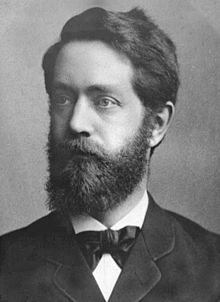
Back برنامج إرلنغن Arabic Programa d'Erlangen Catalan Erlangenský program Czech Erlanger Programm German Πρόγραμμα Ερλάγκεν Greek Programa de Erlangen Spanish Programme d'Erlangen French Programma di Erlangen Italian エルランゲン・プログラム Japanese 에를랑겐 프로그램 Korean

In mathematics, the Erlangen program is a method of characterizing geometries based on group theory and projective geometry. It was published by Felix Klein in 1872 as Vergleichende Betrachtungen über neuere geometrische Forschungen. It is named after the University Erlangen-Nürnberg, where Klein worked.
By 1872, non-Euclidean geometries had emerged, but without a way to determine their hierarchy and relationships. Klein's method was fundamentally innovative in three ways:
- Projective geometry was emphasized as the unifying frame for all other geometries considered by him. In particular, Euclidean geometry was more restrictive than affine geometry, which in turn is more restrictive than projective geometry.
- Klein proposed that group theory, a branch of mathematics that uses algebraic methods to abstract the idea of symmetry, was the most useful way of organizing geometrical knowledge; at the time it had already been introduced into the theory of equations in the form of Galois theory.
- Klein made much more explicit the idea that each geometrical language had its own, appropriate concepts, thus for example projective geometry rightly talked about conic sections, but not about circles or angles because those notions were not invariant under projective transformations (something familiar in geometrical perspective). The way the multiple languages of geometry then came back together could be explained by the way subgroups of a symmetry group related to each other.
Later, Élie Cartan generalized Klein's homogeneous model spaces to Cartan connections on certain principal bundles, which generalized Riemannian geometry.